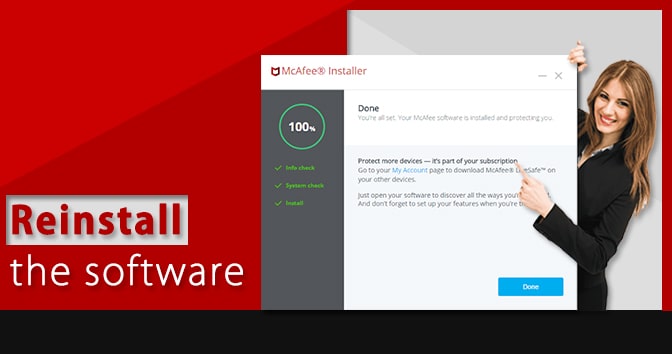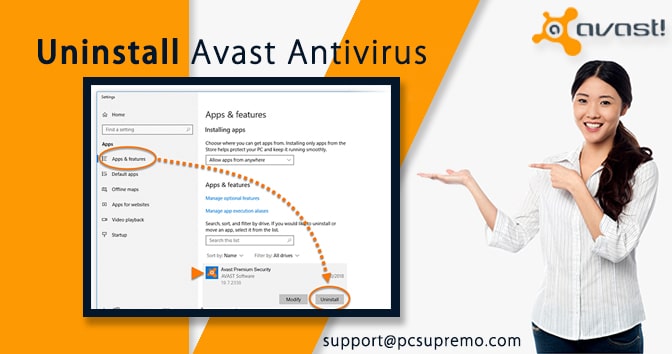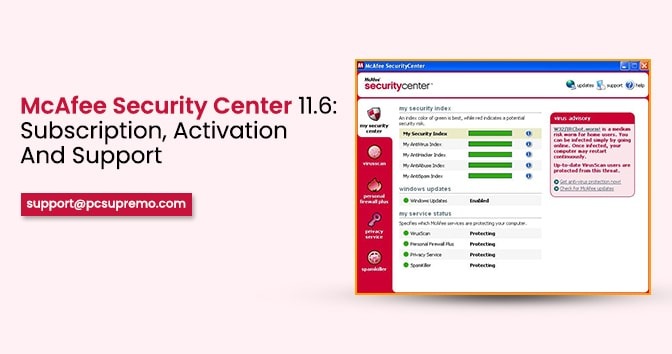Your “expired” McAfee subscription is a scam that occurs during a regular browsing session on most popular browsers, including Google Chrome, Internet Explorer, Mozilla Firefox and others.
Victims are advised to purchase fake license keys for this security software. Unfortunately, it’s just a tech support scam used to swindle money from inexperienced computer users.
Usually, warnings, such as pop-ups for your expired McAfee subscription, are provided by adware. However, this Potentially Unwanted Program can infiltrate your system if you install third-party software without carefully monitoring the process.
Contents
Why does the pop up occur?
Closing the browser which shows the subscription pop up
Adware uninstalling
About McAfee and subscription pop up
How to confirm the subscription?
How to launch the McAfee subscription repair tool?
Know where to view the expiration date and subscription ID
Reinstall the software
Stay alert of these spams
Why does the pop up occur?
However, your McAfee subscription has expired. This fake McAfee warning should be uninstalled immediately unless you are bothered by persistent pop-ups and browser blocks.
To do this, you must remove the advertising program that generated these fraudulent notifications.
Please note that your McAfee subscription alert has expired and is harmless. However, scammers use it to make easy money by tricking people into buying new McAfee product licenses.
If a computer user is misled by the message below, they purchase a license, and the scammer who has the scammer’s McAfee subscription has expired, they will receive a commission.
Advertising programs that provide fraudulent pop-ups may have hidden add-ons on your system.
It is essential to scan your computer and remove expired McAfee subscriptions and other ad-supported items before starting the manual removal process. You can use the McAfee subscription repair tool to scan and remove spam.
Also Read this – Did Norton Send Renewal Offers for Devices Infected With Viruses?
Closing the browser which shows the subscription pop up
Usually, your McAfee subscription scam has expired, and your web browser freezes. To close it, you need to do the following:
- Open task manager
- Find the process in your web browser, click on it and select End Task.
- Then restart your web browser but DO NOT restore the last session.
Adware uninstalling
The only way to get rid of your expired McAfee subscription scam is to uninstall the adware that made it available. To do this, proceed as follows:
- Select programs and featured from the control panel
- Find recently installed or unknown programs and uninstall them.
- Click OK to save your changes and close the Control Panel.
- Then open your web browser again and reset it to default settings.
You may also see your McAfee subscription expire on Mac OS. It runs from HTML.com to apple.com-url.online and appears the same for Windows users.
In this case, you should immediately close your web browser, scan your system with MacKeeper or another malware removal tool, and then reset your web browser settings.
About McAfee and subscription pop up

McAfee provides real-time security against all threats, new and old, lurking in the digital world. However, sometimes users notice that they get an expired McAfee subscription error when opening the browser.
How to confirm the subscription?
If you wish to confirm your subscription, you must follow the instructions below:
- First, you need to right-click on the McAfee M-Shield icon. If you don’t see the McAfee icon, click Show more icons in the toolbar.
- Then you need to click Check Subscription.
- Select allow on the next screen for changes.
- Let the process be finished automatically.
How to launch the McAfee subscription repair tool?
To launch the McAfee subscription repair tool on Windows 7, 8, 8.1, & 10, follow the steps:
- First, visit McAfee’s Subscription Repair Tools page.
- Then you have to click Download.
- Then save the SubDBFix.exe file on the desktop.
- Then you have to double click on SubDBFix.exe to open it.
- When prompted, click Accept or continue the security warning.
- When asked for your McAfee account information, which you will use to register
- Then, you need to select the product package installed on your computer and then click Next.
To launch the McAfee subscription repair tool on Windows XP or Vista, follow the steps:
- First, you need to click on Download and save the repair tool.
- The 2nd step is to right-click on the file and select “Run as administrator”.
- You may need to enter the email address and password you used to register.
- Then select the product package installed on your desktop and click Next.
- Now restart your system.
Also Read this – Norton Automatic Renewal charge in your Credit card statement
Know where to view the expiration date and subscription ID



Steps to review expiration date and subscription ID after the repair process:
- First, go to www.mcafee.com and click About User.
- Then you need to click on My Account.
- Then click Sign In.
- You will then need to enter your email address and password to log in to your McAfee account.
- Then click Sign In.
- Now select the computer running the McAfee software under My Account.
- Then enter a note for viewable subscription details.
- Open your McAfee product.
- Click your subscription.
- Now you need to confirm on your account page that the expiration date and email address are correct or not.
Reinstall the software



Reinstalling the software is done by:
- First, you need to uninstall the McAfee product currently installed on your device.
- Then enter the pre-installed tools.
- Then install the Pre-installation Tool.
- Then double click the Pre-Install_Tool.exe file and open the prompts.
- Review the warning message and click OK to apply the changes.
- After the tool pre-installation is complete.
- Then click OK and close the window.
- Now restart your computer.
Stay alert of these spams



Lack of knowledge and negligent behaviour are the leading causes of computer infections. The key to safety is prudence.
Therefore, you should be careful during the download/installation process and generally while surfing the Internet. Disable any additional programs included and refuse download offers.
We advise you never to use any third-party download/installation tools as developers spread it by promoting malicious apps. All the products must be officially purchased from the websites.
Keep in mind that developers invest many resources into designing annoying ads to make them look legitimate.
Still, most of them lead to pornography, adult dating, research, gambling, and other unreliable websites. If you find these ads, uninstall suspicious apps and browser extensions.






